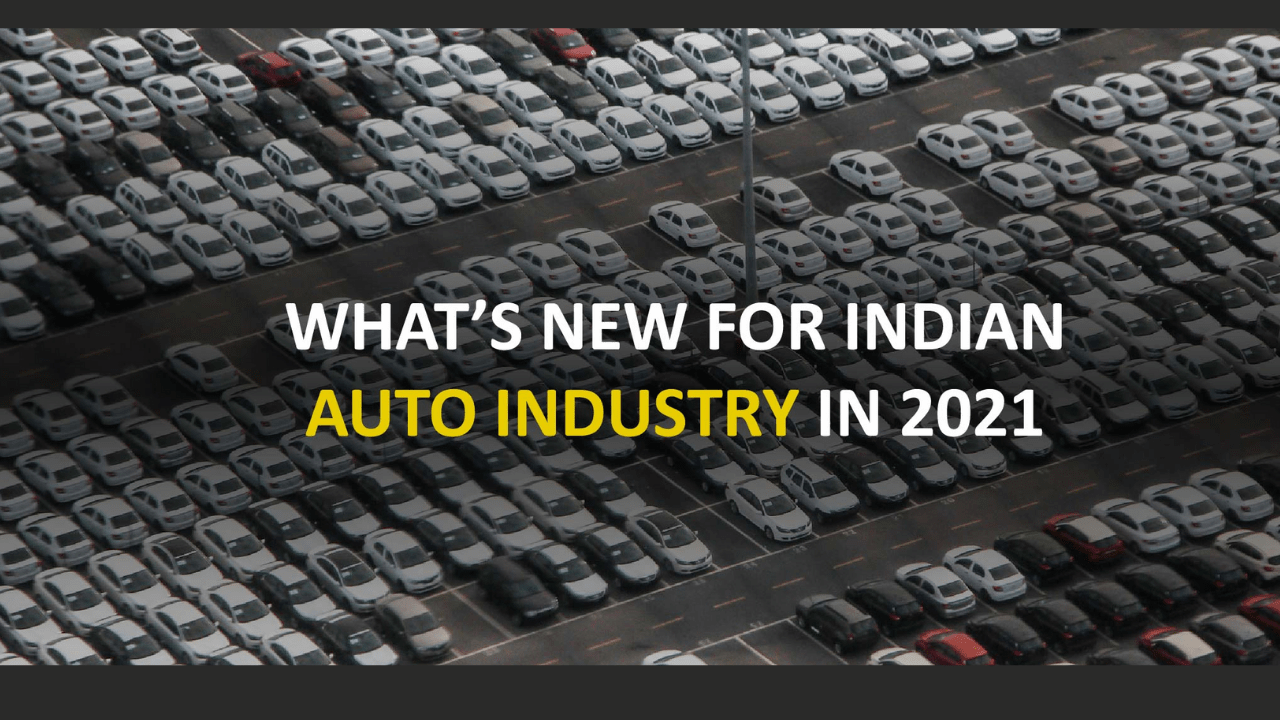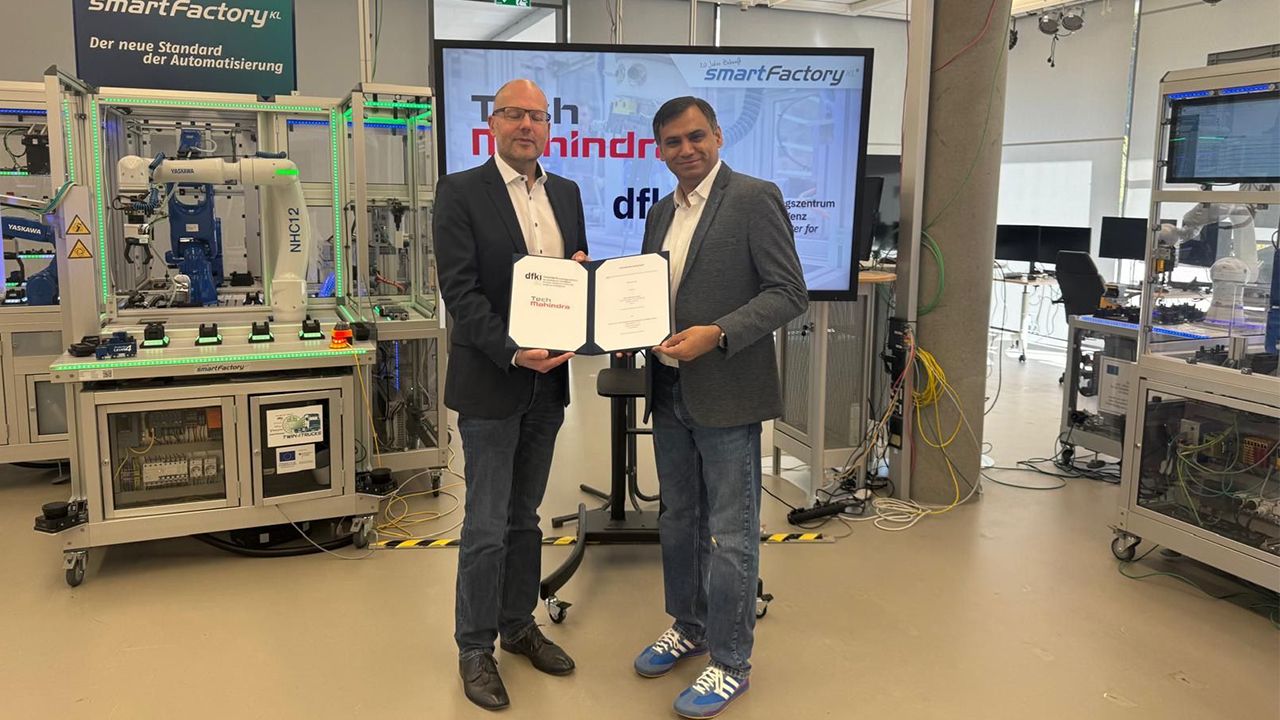As the global businesses are pacing with digital transformation, the automotive industry is also adopting many new digital technologies for better outcomes.

The global automotive industry has always been a market where the industrial and technology sector unsettles to bring out groundbreaking answers. The global automotive sector is adopting technologies such as Artificial Intelligence (AI), Big Data & Analytics, which have been seen for a long time, and newer technologies such as the Internet of things (IoT), and Blockchain are a few of the newest introductions in terms of technology. With the increased digitization of the world, the Global Electronic Vehicle (EV) market is also moving towards huge changes in 2021. In 2020, this industry was a sector with unprecedented twists and turns, with no one knowing the exact results of the introductions done by them.
The automotive industry in India currently contributes to more than 7% to India’s GDP, but with the Automotive Mission Plan 2016-26, it is expected to increase to 12%. In a report released in 2016, it was found that the automotive industry was slowly moving towards a future age, with higher margins for the automakers and more choices for the users and the users would find innovative driving solutions.
The Indian Automotive Industry in 2021:
2020 has been a slow year, where not many people have bought cars due to the COVID-19 pandemic, but the automotive industry has started its rebound process and will be a ray of hope for everyone. Various trends will be new for the Indian market, which will help the Indian auto industry to rise above its competitors. These are:
1. Government of India Initiatives for the Auto Sector:
The Indian Government is planning to introduce incentives for Auto OEMs and components manufacturers to increase local production and export to foreign countries. The Department of Heavy Industries (DHI) has taken feedback from the auto industry on the initial proposal put forward by it, which suggests giving incentives for five years to increase the local manufacturing and procurement for production. This move was to create ‘champion’ sectors, to attract investors, generate jobs as well as increase manufacturing. In FY-19, India’s auto sector touched USD 27 billion, which was led by companies such as Suzuki, Ford, Bosch, Hyundai Motor, Volkswagen, etc.
There have been different guidelines set by the government of India such as the BS-IV vehicle norms were to be replaced by BS-VI norms by April 2020. The Government, to get the unfit vehicles off the road, and create demand for new vehicles, also considered the ‘scrappage policy’. The one-time vehicle registration fee was postponed until June 2020, which the automobile industry had argued that an increase in the vehicle registration fee would affect the demand.
The Minister of Road Transport and Highway has stated that the government of India is also open to receiving suggestions from the auto industry to make the changes that are required with respect to manufacturing of automobiles. The Ministry of Shipping, Road Transport & Highways (MoSRT&H), has set up the Automotive Industry Standards Committee (AISD) for the sole purpose of reviewing the safety standards in relation to the motor vehicles in India, on a periodic basis and to make recommendations. Another committee named the Standing Committee on Implementation of Emission Legislation (SCOE) has also been set up by the MoSRT&H, to regulate the emission norms. This committee decides the emission norms for the future and provides recommendations for the norms of the in-use vehicles to the Ministry.
The government has also introduced the Automotive Mission Plan 2026, where the government and the auto industry have set a target to grow the industry by 3.5 - 4 times to $300Bn. To achieve these goals, the auto industry can contribute to more than 60 million additional direct and indirect jobs, which will ultimately result in improved manufacturing competitiveness and reduced emissions.
The Finance Minister of India has said that, to boost the demand of the automobile sector, various relief measures will be introduced, including an increased depreciation cost for the auto industry for the corporates and businesses. Additional 15% depreciation was provided on vehicles acquired until March 2020, bringing the total depreciation to 30%. These methods will help the Indian automotive industry to receive the boost to overcome the loss that it faced due to the COVID-19 pandemic.
2. Connected Car Technology:
According to a research firm, Indian Car buyers top the list when it comes to being open to increased vehicle connectivity. The research has claimed that 80% of Indian customers think that increased vehicle connectivity will be beneficial in the long-term. One of the largest car markets in the world, India ranks first in data collection related to connected vehicles.
The Indian connected car market is expected to grow at a CAGR of 20% during the period 2020-2025. Since the connected car requires access to the internet for smooth functioning, many players are planning to launch their connected cars in India, and have collaborated with telecom companies to make their connected cars a reality in the Indian market. India has a target of becoming an all-electric nation by 2030, where a mass production of connected cars is being considered. The Indian Government has mandated the presence of connected services for public transport that came into effect in April 2018.
Research and Development is becoming an important aspect for the hybrid and electric vehicles, connected as well as autonomous cars. Different car companies have taken the responsibility to reduce the emission of CO2 in the entire value chain to zero by 2050. An analysis on the different Indian automakers by experts have found that two-wheeler makers spend around 2% of their turnover on R&D, while the other companies spend around 3%-5% on R&D. On path to become global automotive industry hub, India is home to more than 30 automotive R&D centers. With the increase in R&D services in India, the connected car market is projected to grow at a CAGR of 22.2% by 2025, and reach USD 32.5 billion. The in-vehicle connectivity will become the default demand for car drivers in the coming years, which will lead to an increase in the number of connected cars to 250 million by 2022.
3. Electrification:
There has been an increase in the usage of fossil fuels, which has a direct negative impact on the environment. The increased fossil fuel usage has changed the automotive industry and its outlook on Electric Vehicles (EV). Cars contribute to approximately 15% of carbon emissions, which lead to the depletion of significant fossil fuel reserves and this leads to irreversible damage to the environment. Electric Vehicles, here, are addressing these issues and challenges by leveraging a higher level of energy efficiency and reduced fuel usage.
The Indian Electric Vehicle Ecosystem Market will reach USD 216.3 Bnn by 2030. A research conducted by experts’ state that the Indian EV market is anticipated to grow at a CAGR of 43.13% during the forecast period of 2019 to 2030. The charging infrastructure installation is expected to grow at a CAGR of 42.38%.
Despite the Indian automotive industry facing a sharp decline in the FY-2019, the electric vehicle market is expected to grow in the coming years. Ever since the BS6 norms have become applicable in the country since April 2020, the electric vehicles will become more price-competitive. The sales of the electric vehicles will increase with the introduction of these norms.
4. Double-Digit Growth:
Experts have stated that passenger vehicles sales will grow over 15% to about 2.5 million cars in FY22, over an estimated base of 2.1 million cars in 2021. The commercial vehicle sales are expected to grow by 25% to about 650,000 units in FY22, with an estimated base of 525,000 units in FY21.
The commercial automotive sales are expected to increase by 16% in 2021, after a fall of 16% in 2020. The Indian Electric Vehicle market is expected to reach USD 7.09 billion by 2025, which is huge growth, as expected to the growth of the EV market in 2020. India is expected to become the third-largest automotive market, replacing Japan by 2021. As the Indian automobile industry receives support for different reasons such as R&D centers, presence of skilled labor, lower costs of steel production, etc. there are also greater opportunities for investment and employment of skilled and unskilled labor. There is a probability for the Indian automotive industry to reach USD 251 to 282 billion by 2026.
Despite the Indian automotive industry facing a sharp decline in the FY-2019, the electric vehicle market is expected to grow in the coming years. Ever since the BS6 norms have become applicable in the country since April 2020, the electric vehicles will become more price-competitive. The sales of the electric vehicles will increase with the introduction of these norms.
5. 3D Printing:
There is always a demand for newer and spare products in the automotive market. A better performing vehicle receives the first priority over backdated ones. There is a need to optimize their production and streamline the supply chains and logistics that have increased demand. 3D printing is adding the performance factor that is required to meet the needs and demands of the customers of the automotive industry and offers faster turnaround times during R&D phase.
6. Blockchain:
The automotive industry always has a keen eye for the newest technologies to streamline their processes, increase revenue, introduce new end-user functionalities, etc. Different car parts, when being delivered can be lost, stolen, or even replaced. Blockchain will allow the manufacturer to keep a track of these pieces and facilitate all the procedures, as it carries every piece of information of the origin of the parts. The data can be stored, starting from bills of lading for the vehicle parts, to their quality inspection. The introduction of Blockchain in the automotive industry by 2021 will help create secure communications, both vehicle-to-vehicle and object to object.
The Minister of State for Electronics and Information Technology (IT), has said that the Indian government is considering the potential usage of Blockchain technology and the need for shared infrastructure for the different use cases attached to it. He further added that the Ministry of Electronics and Information technology is also preparing an approach paper on the National Level Blockchain Framework to adopt the Blockchain technology in the country.
In conclusion, it can be said that the automotive industry has the capability to rise above the situation created in 2020.

NEWSLETTER
TRENDING ON PRO MFG
MORE FROM THE SECTION








